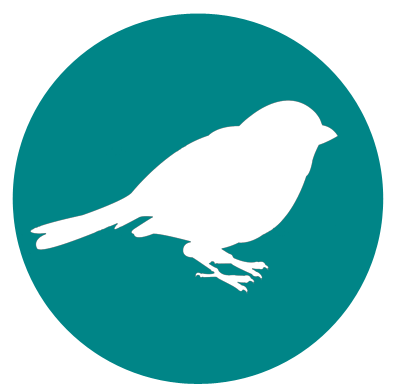Birding at Slate Run Metro Park
Canal Winchester, OhioGeneral Information
Address
1375 St. Rte. 674 North, Canal Winchester, OH 43110
County/Counties
Pickaway
DeLorme Page Number and Coordinates
(7th Edition and earlier) Page 68, B-3
Nearest Town or City
Seven miles south of Canal Winchester, Ohio.
Directions from Nearest Town or City
From SR 33 in southeast Columbus, drive south to the SR 674/Gender Road exit (The sign also says Canal Winchester). After about 4 miles, turn left at the stoplight. In another ½ mile or so, turn right at the stoplight. After about 3 miles, Slate Run Metro Park’s main entrance will be on your right. To get to the Wetlands Wildlife Refuge area, pass the park entrance and turn right onto Marcy Road. Continue for about 3 more miles and turn right onto Circleville-Winchester Road. After about 2 miles, the wetland entrance will be on your right.
About Slate Run Metro Park
Slate Run Metro Park is just over 1700 acres of mixed habitats – a large second-growth forest, grasslands, restored wetlands, open fields, successional/shrubby areas, a man-made lake, and two picnic areas. The park’s main road is paved and goes east and west to the main picnic areas of the park, as well as to the Living Historical Farm. Park maps and information are available at the Ranger Station/Naturalist Office; the first building you come to on the right, once you enter the park.
Birding Strategy: The entire park is “birdy” and, during the last twenty years, over 200 species of birds have been identified here! See the seasonal specialties (below) for ideas on where to find birds for each of the seasons. Also, a description of specific habitat locations has been included here.
Forest Area: This is a 1.5-mile gravel trail through hilly terrain (see map). This area can be accessed from either picnic area.
Grasslands: This is a 3-mile (roundtrip), unimproved, easy walking trail that goes through a grassland area and then to a wetland observation deck (with permanent 50x spotting scope). This trail can be accessed from the Sugar Maple Trail (in the forest) or from the Kokomo Trail (in the wetland).
Wetlands: This area is easily accessed from the Wetlands Wildlife Refuge parking lot on Circleville-Winchester Road. Here your will find a 1.5-mile unimproved, easy walking trail through the wetland area which can be extremely wet and muddy at times. A permanent, 50x spotting scope is located at the first deck.
Successional Areas: This is a 1-mile gravel trail through shrubby areas and also some forested areas. The trail goes through a late-1800’s Blackburn/Wesner covered bridge and is also the parks’ only Pet Trail (you may bring your leashed dog on this trail). This trail can be accessed from the Buzzard’s Roost Picnic Area.
Buzzard’s Roost Lake: A 1/3-mile trail (with one small steep hill) leads to the lake. There are two fishing docks and one wildlife observation dock.
Open Fields: This area can be seen as you drive along the road to the Buzzard’s Roost Picnic Area. Be careful if you pull off the road to stop and look for birds, as the road edges tend to be muddy. Also, this roadway is sometimes very busy with traffic. There are no trails leading through the open fields, and visitors are not permitted to be off any of the trails, so viewing here must be made from the car or from along the roadside.
Boundary Roads: The boundary roads of the park are: Circleville-Winchester Road on the west, Marcy Road on the south, SR 674 on the east, and Duvall Road on north. A portion of the park is also located north of Duvall Road and south of Neiswander Road. The horse trail area is off limits, unless you are on a horse, and the Day Camp area is available by reservation only.
Visiting Information
Closed hours/season
6:30am to dark.
Parking Areas
There is paved parking at two of the picnic areas: The Living Historical Farm, and The Wetlands Wildlife Area. All parking lots are close to the nature trails.
Fees/Permits
None.
Restroom Facilities
Pit toilets are located at the picnic areas and the Living Historical Farm.
Harmful Insects, Poisonous Plants, or Animals
Poison Ivy.
Restaurants in the Area
There are many fast-food restaurants at the SR 674/33 interchange including McDonalds, Arby’s, Taco Bell/Pizza Hut, Popeye’s, Wendy’s and a Dairy Queen nearby. There are also sit-down restaurants here including Bob Evans, Donato’s Pizza, Skyline Chili, and Buffalo Wild Wings. The Marcy Store and Diner (specializing in pizza and subs) is less than a mile from park entrance, at the corner of SR 674 and Marcy Roads.
Other Useful Information
Birding at this park is definitely worth the drive! Although it may seem like a long drive from Columbus, it’s only a little over half an hour from the downtown area. The nearest gas station is about four miles away.
Other Birding Spots in the Area
Pickerington Ponds Metro Park, Chestnut Ridge Metro Park, Stages Pond, Calamus Swamp, and the AW Marion State Park are all close by. There area also many agricultural fields surrounding the park where American Kestrels, Horned Larks, etc. can be seen.
Birds of Interest by Season

Winter
Northern Harriers can be seen at the wetlands and at the Buzzard’s Roost prairie. It is not uncommon to have a “3 owl” evening, hearing and/or seeing Barred, Screech, and Great Horned Owls throughout the forest area. A large variety of winter sparrows can be observed at feeders throughout the park. The water at Buzzard’s Roost Lake tends to remain partially open throughout the winter, attracting some waterfowl like Greater or Lesser Scaup, Redhead, Canvasback, and hundreds of Canada Geese.
Spring
On a good day in May, you may tally over 100 species in this park where a great variety of migrant species can be found due to the wide variety of habitats found here. Each spring, incredible American woodcock displays can be witnessed at the Buzzard’s Roost prairie and along the Covered Bridge Trail. You should expect to see a nice variety of warblers and possibly Baltimore and Orchard Orioles along the tree rows in the wetlands area. The boardwalk section is a great place to look for purple martins and also an occasional Black or Forster’s Tern. Both Yellow-billed and Black-billed Cuckoos may frequent the small picnic areas around Buzzard’s Roost Lake. The forested trails offer a good variety of warblers, thrushes, and woodpeckers. In the small openings throughout the forest, look for Blue-winged Warbler, White-eyed Vireo, and a good mix of sparrows and finches.
Summer
Grassland species found along the Bobolink Trail include Bobolink, Henslow’s Sparrow, Grasshopper Sparrow, Savannah Sparrow, Eastern Meadowlark, and an occasional Dickcissel. Several swallow species, Eastern Bluebird, Yellow-breasted Chat, and Indigo Bunting are also expected here. During the last two summers, Little Blue Heron, American Bittern, Sedge Wren, and Red-headed Woodpeckers have been observed at the wetlands as well as good numbers of Green Herons and nesting Blue-winged Teal. Osprey platforms were erected here in 2002 with the hope of a nesting pair in the near future. In the forested area, nesting warblers include Northern Parula, Yellow-throated Warbler, Kentucky Warbler, and Hooded Warbler. You can’t miss seeing and hearing the abundant Gray Catbirds!
Fall
A nice variety of waterfowl can be seen at the wetlands during the fall migration; especially Ring-necked Duck, Norhtern Pintail, Wood Duck, Blue-winged Teal, Green-winged Teal, and American Coots. From the Shady Grove Picnic Area, large numbers of Common Nighthawks have been seen in migration, often flying low to the ground.

